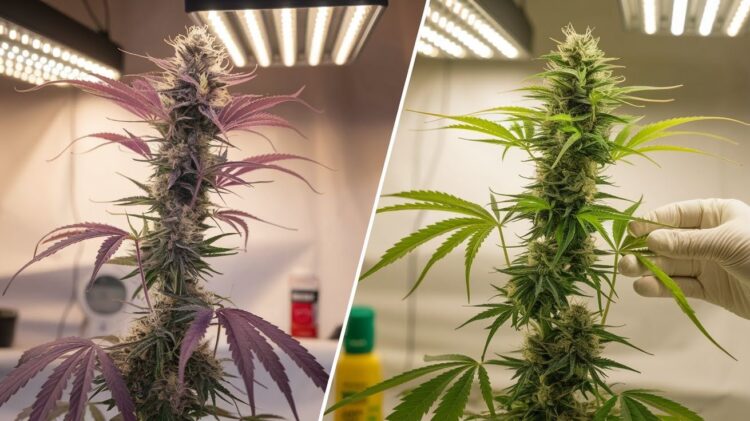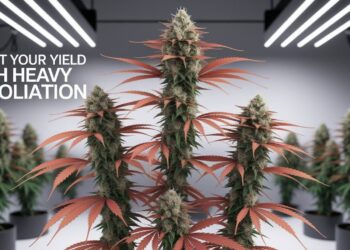Growing cannabis can be fulfilling, but nutrient issues like phosphorus deficiency can hold your plants back fast. I’ve seen it many times in both small home grows and larger setups. It’s a common problem that often gets mistaken for something else.
In this guide, I’ll show you how to spot the early signs of phosphorus deficiency, explain what causes it, and walk you through steps that fix it fast. These tips are based on years of hands-on growing, not guesswork or secondhand advice.
You’ll get simple, proven methods that protect your plants and save your harvest. We’ll also cover how to prevent it from happening again. Whether your leaves are turning dark, curling, or showing strange spots, this article will help you figure out if phosphorus is the issue and give you the right tools to fix it with confidence.
Why Phosphorus Matters for Cannabis Health
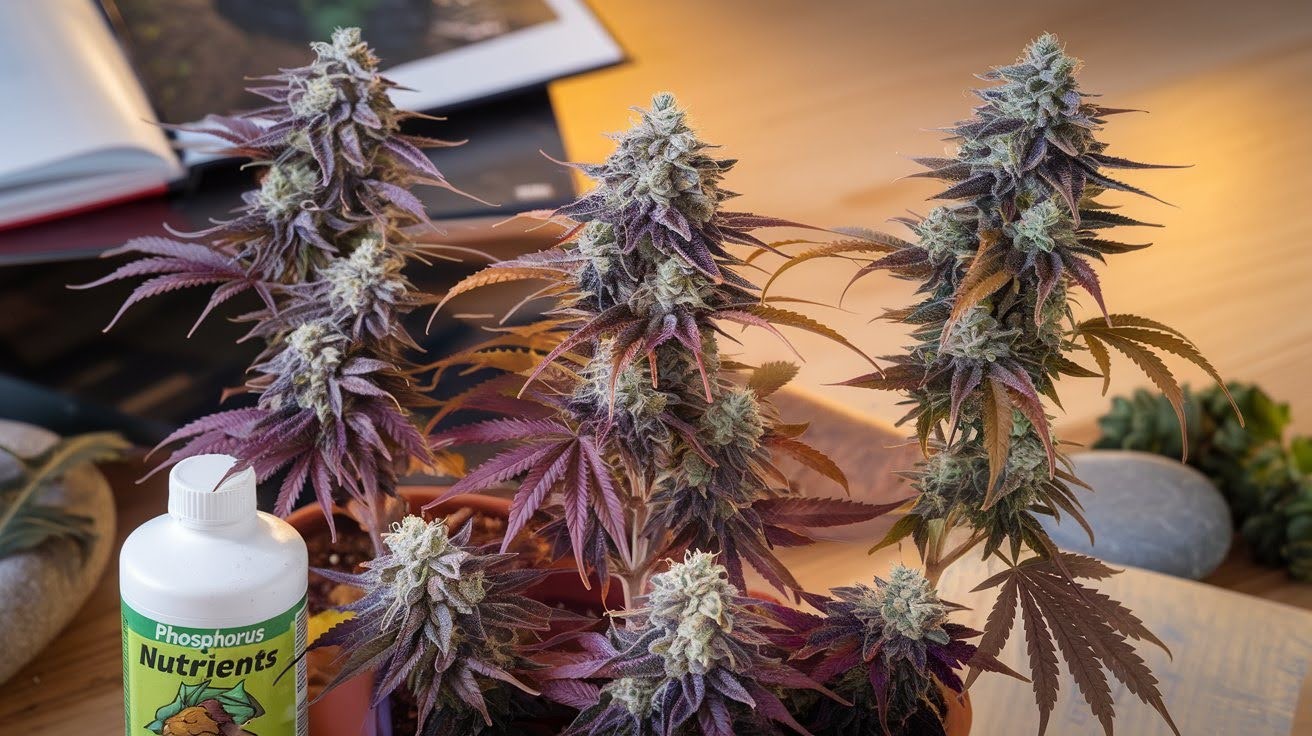
Think of phosphorus as your plant’s energy drink. Without it, your cannabis can’t function properly. Energy is everything in plant growth. Phosphorus acts like tiny batteries inside your cannabis, moving energy from leaf to leaf.
This process powers photosynthesis – how your plant makes food from sunlight. But here’s what most growers miss:
Phosphorus doesn’t just help leaves. It’s critical for strong root systems. Weak roots mean weak plants, no matter how much you feed them.
During flowering, phosphorus becomes even more critical. Your plant needs massive amounts to build those dense, resinous buds you want. Without enough phosphorus, flowers stay small and loose.
Disease resistance also depends on phosphorus. Plants with proper phosphorus levels fight off infections better. They recover faster from stress, too.
I’ve seen countless grows fail because growers ignored phosphorus needs during budding. Don’t make that mistake.
Identifying Phosphorus Deficiency Symptoms
Catching phosphorus deficiency early saves your harvest. I’ll show you exactly what to look for.
Early Warning Signs
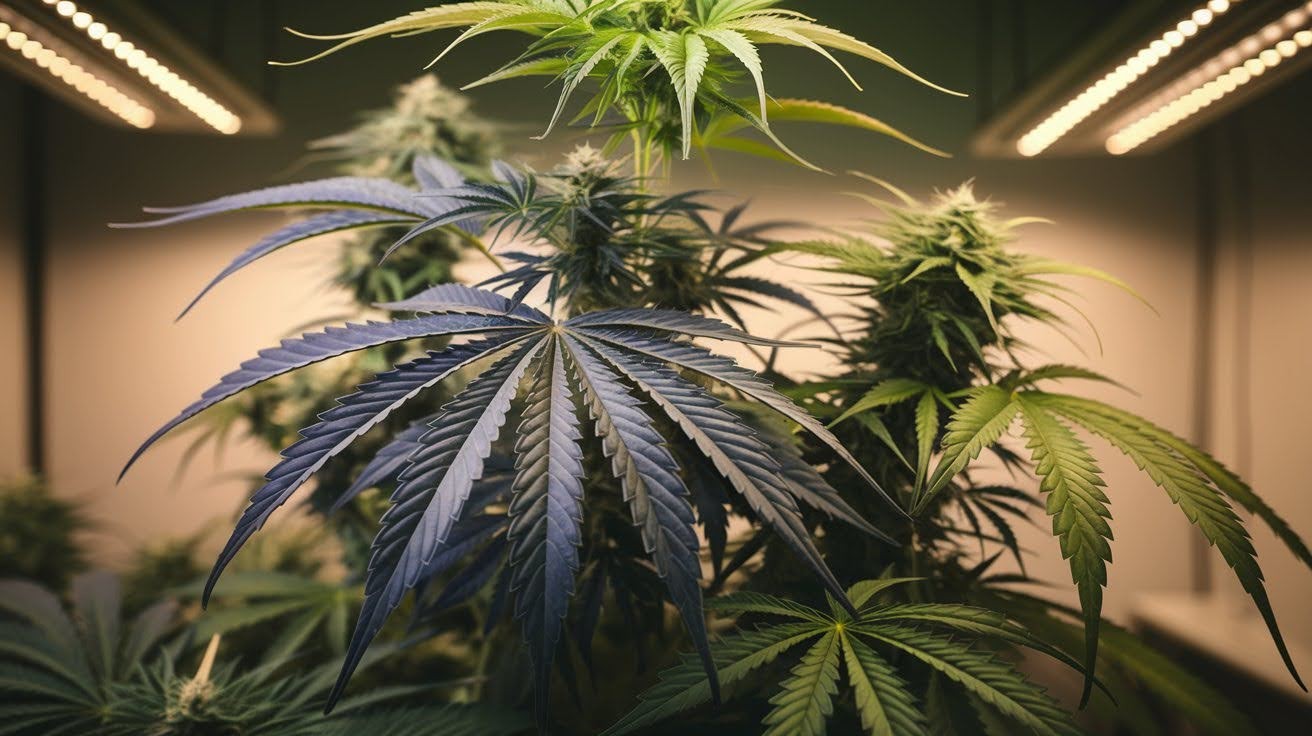
Your plant will slow down first. Growth becomes sluggish, and your cannabis loses that healthy green vigor. The leaves tell the real story, though:
Dark green coloration that looks almost blue or gray. This isn’t the rich green of healthy plants. It’s dull and unnatural.
Many leaves develop a shiny, glossy surface, almost like they’re coated in wax. Purple or red stems sometimes appear. But don’t rely on this alone – not all phosphorus-deficient plants show stem discoloration.
Progressive Symptom Development

Here’s where things get serious. Visual Changes: Older leaves develop olive-green spots with weird, irregular shapes. These aren’t neat circles like other deficiencies.
Bronze and brown splotches start appearing next. Sometimes they look purple under certain lights. The leaves feel different, too. They become thick and stiff, losing their natural flexibility. Dry to the touch.
Leaf tips and edges curl downward. This gives your plant a stressed, droopy appearance. Your stems become weak and brittle. They snap easily when bent. Lower leaves turn yellow in advanced stages.
Large dead areas spread across the leaves. These brown, crispy patches mean tissue death.
Don’t wait until you see these late symptoms.
Where Symptoms Appear First
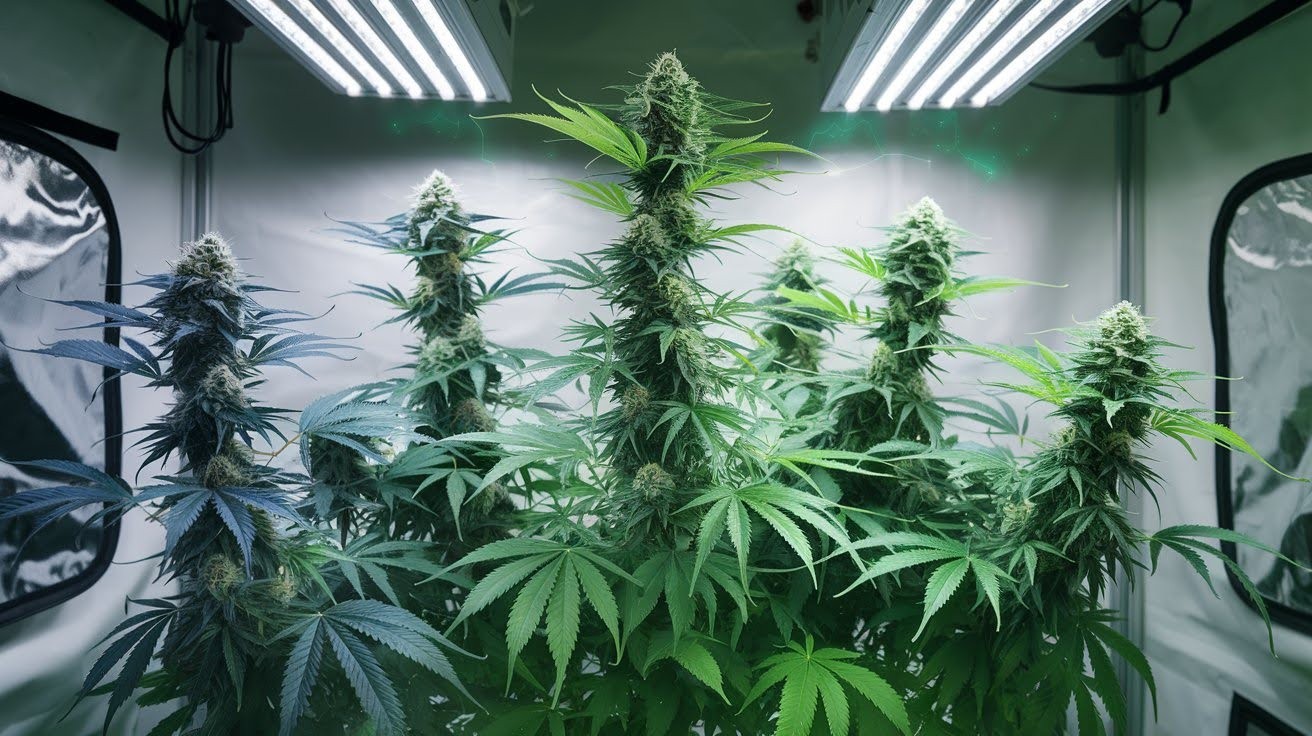
Start looking at your older leaves. That’s where phosphorus deficiency always begins. The bottom, older leaves get hit first. Your plant pulls phosphorus from these leaves to feed newer growth up top.
This is key: Symptoms move upward over time. If you see problems on the lower leaves today, the upper leaves will show damage next week without treatment. Timing matters too.
The mid-vegetative stage is when I see most cases start. But the flowering stage is when it gets awful. Your plant needs massive amounts of phosphorus to build buds.
Impact on Yield and Quality
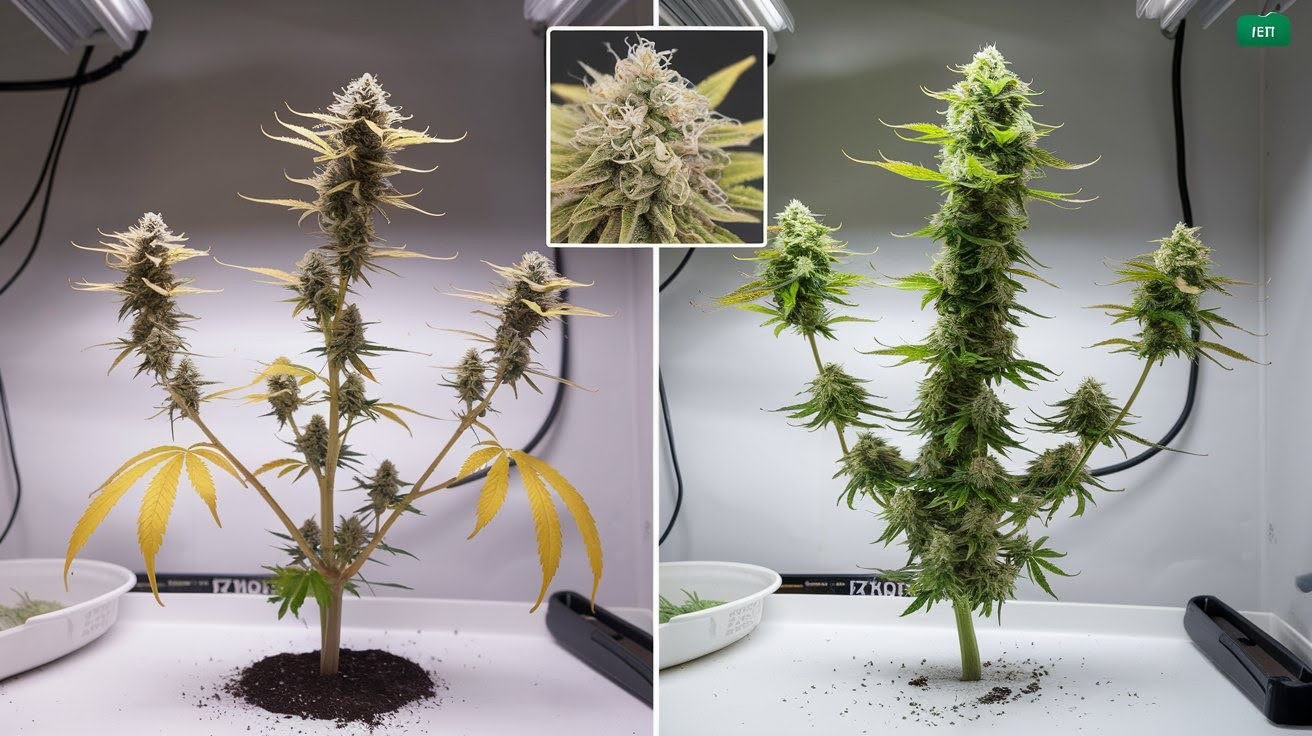
This is why phosphorus deficiency is so dangerous. Your flowers will be smaller and fewer. I’ve seen growers lose 30-50% of their expected yield from untreated phosphorus problems.
But yield isn’t everything. Resin production drops significantly. Your buds won’t be as sticky or potent as they should be. The trichomes that produce THC and other compounds need phosphorus to form correctly.
Timing gets messed up, too. Flowering takes longer. Plants struggle to finish correctly. Some never fully mature. I’ve watched growers spend months caring for plants, only to harvest weak, disappointing buds because they ignored phosphorus deficiency signs.
Don’t let this happen to you.
Common Causes of Phosphorus Deficiency
Understanding why phosphorus deficiency happens helps you prevent it. Let me break down the main culprits.
pH Imbalances – The Leading Cause
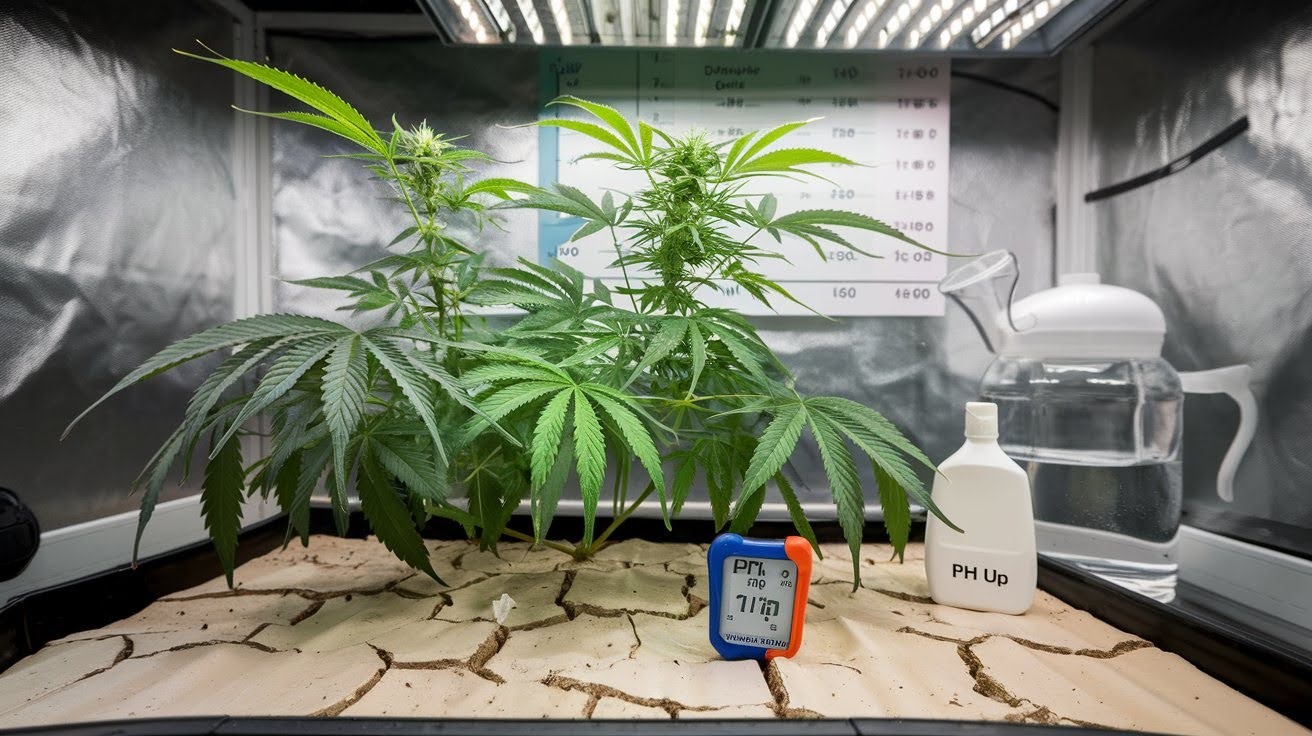
pH is the number one reason I see phosphorus problems. Your plant can’t absorb phosphorus if the pH is wrong. In soil, keep pH between 6.0 and 7.0. For hydroponics, aim for 5.5-6.5.
When pH goes too high or too low, nutrient lockout happens. Your plant literally can’t access the phosphorus that’s already there. Acidic soil is a massive problem for outdoor growers. Rain makes soil more acidic over time.
Environmental Factors
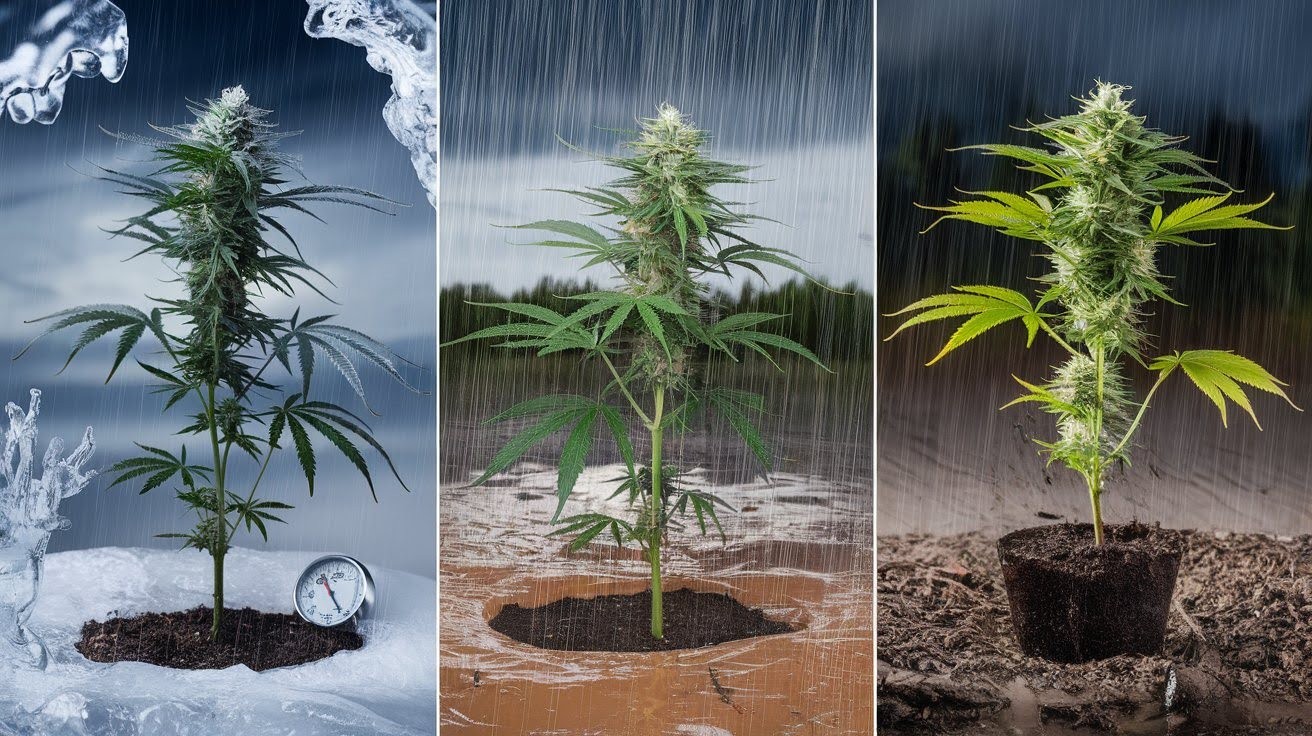
Cold kills phosphorus uptake. Temperatures below 60°F slow everything down. Temperature swings are just as bad. Your plant gets stressed and can’t absorb nutrients properly.
Heavy rain washes nutrients away from outdoor plants. This is called leaching. Poor air circulation around roots also blocks uptake. Your plant needs oxygen in the root zone.
Nutrient-Related Issues
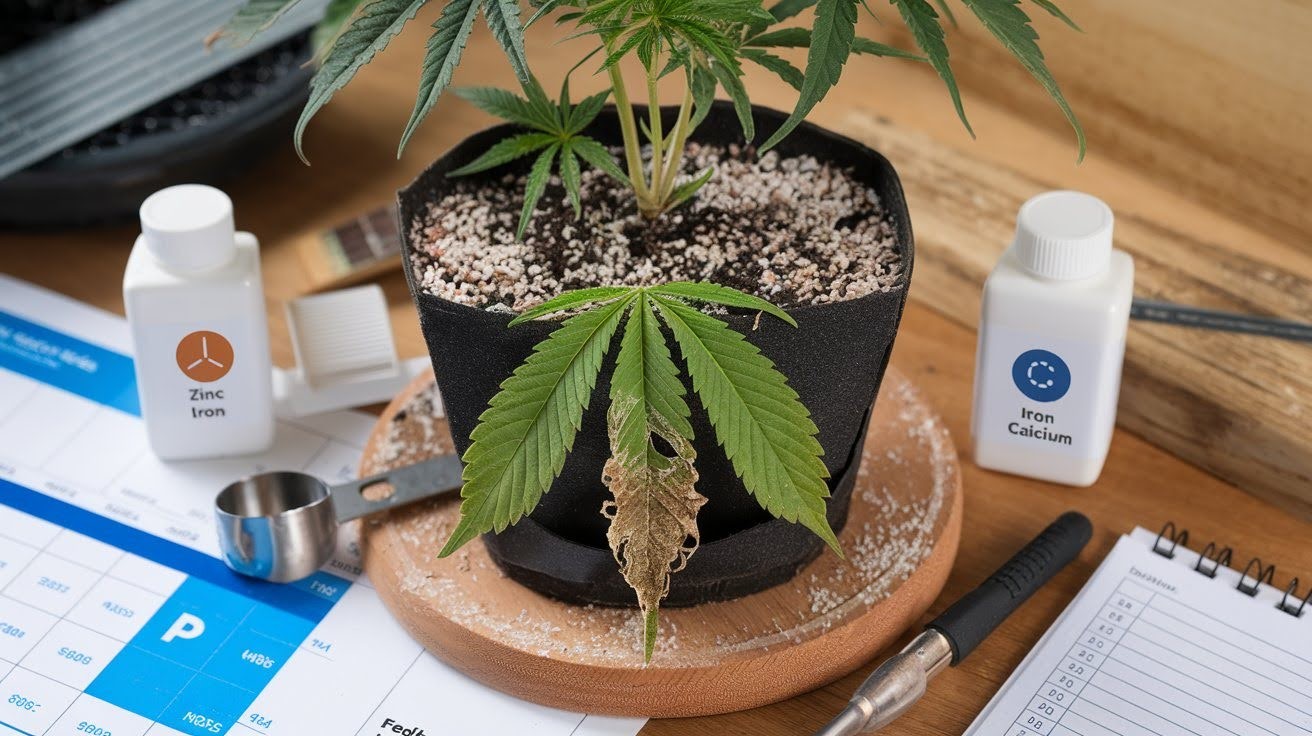
Sometimes there’s not enough phosphorus in your growing medium. Cheap fertilizers often lack proper phosphorus ratios. You get what you pay for.
Here’s something most growers don’t know: Too much zinc, iron, or calcium blocks phosphorus absorption. More isn’t always better.
Salt buildup from overfeeding creates barriers. Your plant can’t access any nutrients when salts coat the roots.
Growing Medium Problems
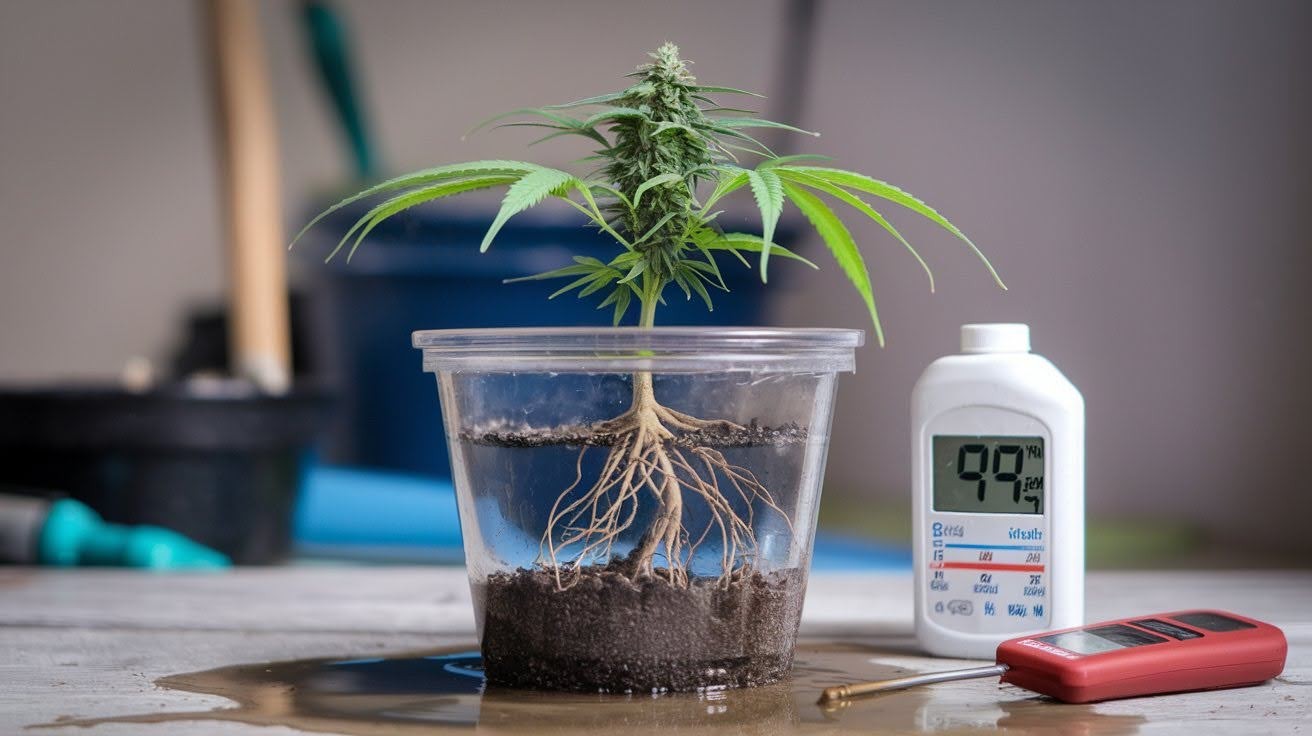
Compacted soil suffocates roots. They can’t function without proper drainage. Poor soil quality without organic matter won’t hold nutrients properly.
Overwatering is a silent killer. Waterlogged roots can’t absorb phosphorus even if it’s available.
Beneficial bacteria help roots absorb phosphorus. Sterile growing media lack these helpful microorganisms.
I’ve seen growers spend hundreds on expensive nutrients while their basic pH was wrong the whole time. Fix the fundamentals first.
Step-by-Step Treatment Methods
Quick action saves your plants. Here’s exactly what to do when you spot phosphorus deficiency.
Immediate Quick Fixes
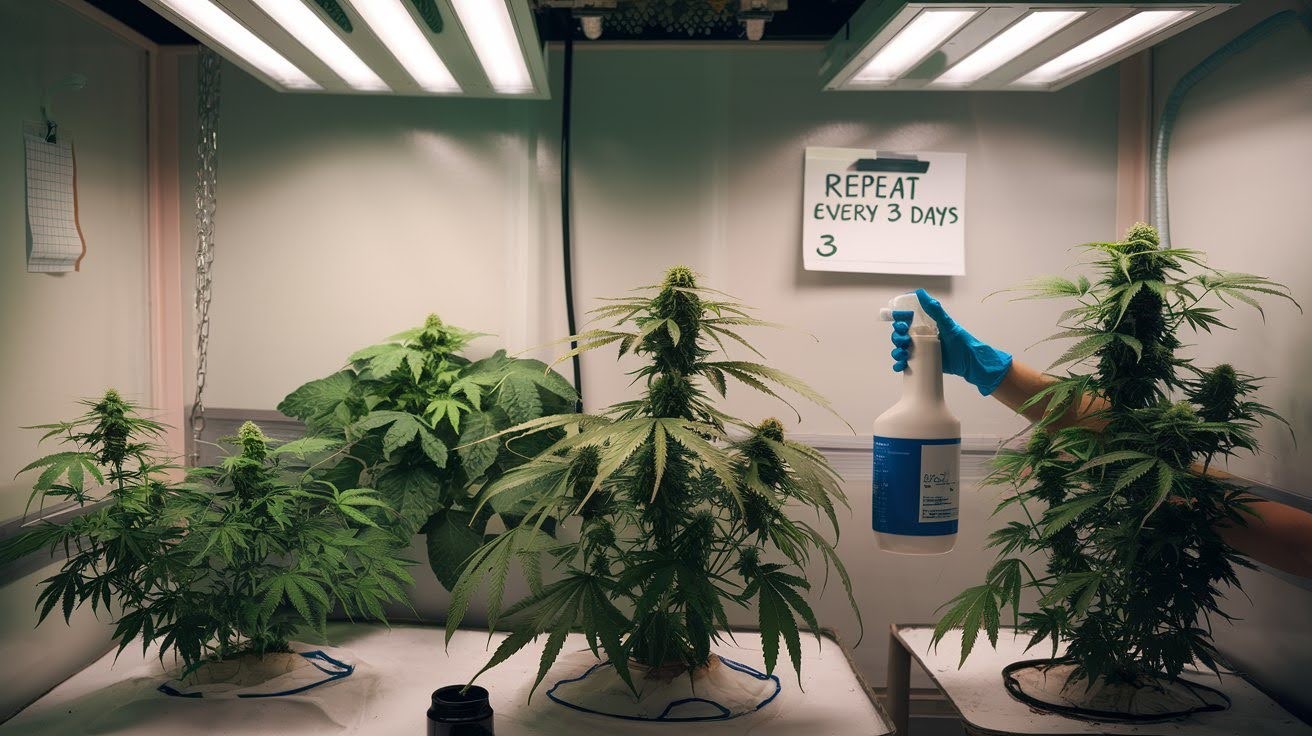
Foliar feeding is your emergency solution. Mix a diluted phosphorus spray and apply it directly to leaves. Fish extract works great for organic growers. Synthetic phosphorus solutions work faster but smell less pleasant.
You’ll see improvement within 48 hours. Leaves start looking healthier, and growth picks up.
Critical timing: Only spray during lights-off periods. Wet leaves under grow lights cause burns.
Here’s the spray method:
- Mix the solution to half strength
- Spray the undersides of leaves thoroughly
- Focus on affected areas first
- Repeat every 3 days until recovery
pH Correction Protocol
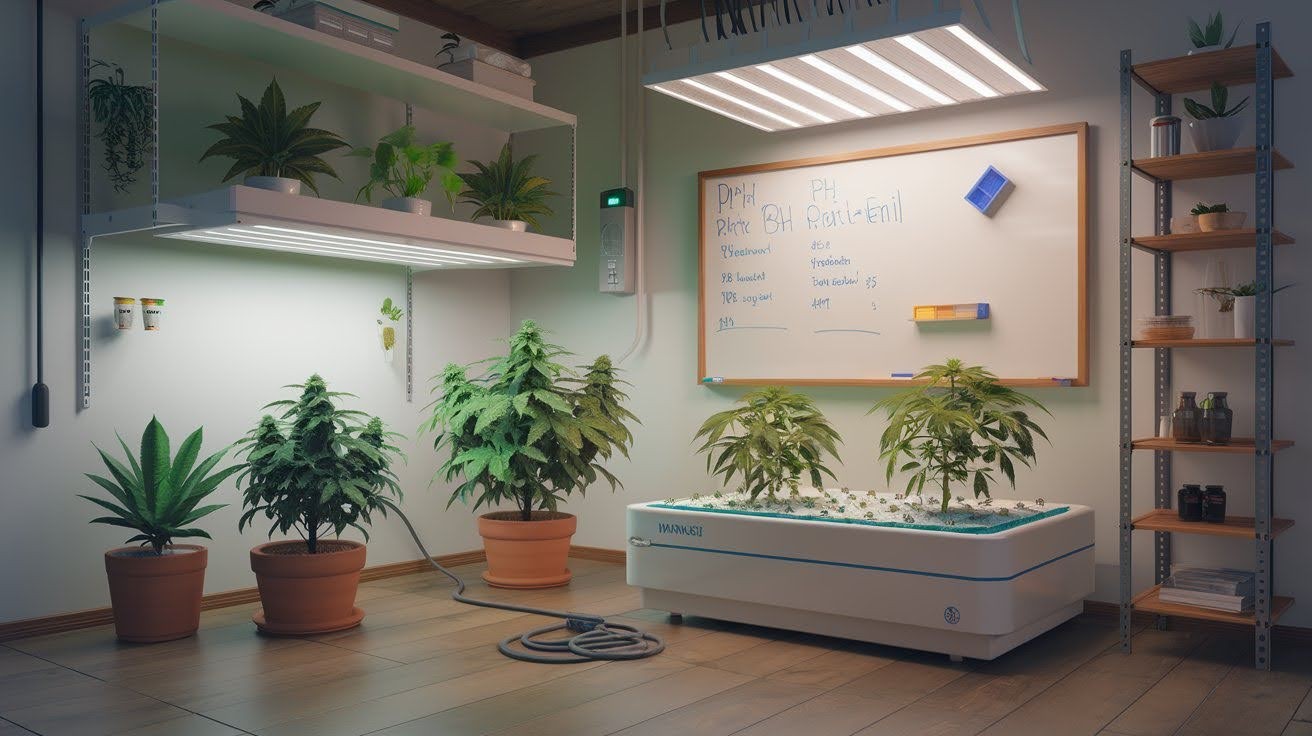
Test your pH first. This solves most phosphorus problems instantly. Grab your pH meter and check the soil or hydroponic solution immediately.
Flush the system with pH-adjusted water. For soil, aim for 6.2-7.0. This removes built-up salts and resets everything.
Wait 24 hours after flushing before adding nutrients. Then add phosphorus-rich nutrients at the recommended strength. Don’t overdo it – stressed plants need gentle feeding.
Monitor daily for the next week. pH can drift back to problem levels. I’ve seen this simple pH fix save countless grows. Most growers skip this step and wonder why expensive nutrients don’t work.
Nutrient Adjustment Strategy
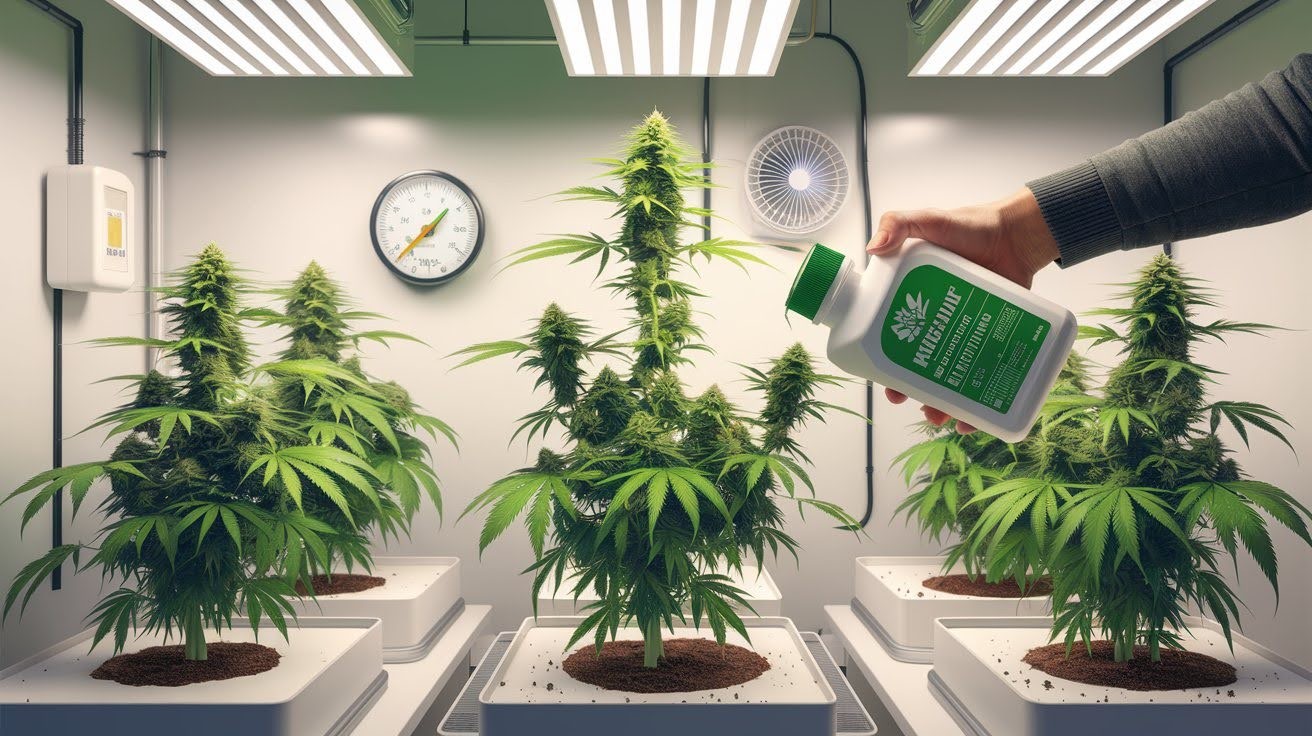
Boost your phosphorus levels in the next feeding. Don’t wait for the regular schedule. Switch to flowering nutrients even if you’re still in the vegetative stage. These have higher phosphorus content than your plant needs.
Ionic nutrients work fastest. Mix them as a root drench and pour directly around the base. Your plant absorbs these immediately.
Temperature control is crucial. Keep your grow space between 70-85°F. Cold slows down nutrient uptake dramatically.
Here’s my feeding approach:
- Double phosphorus for 2-3 feedings
- Return to normal once symptoms stop
- Monitor new growth for improvements
Organic Treatment Options
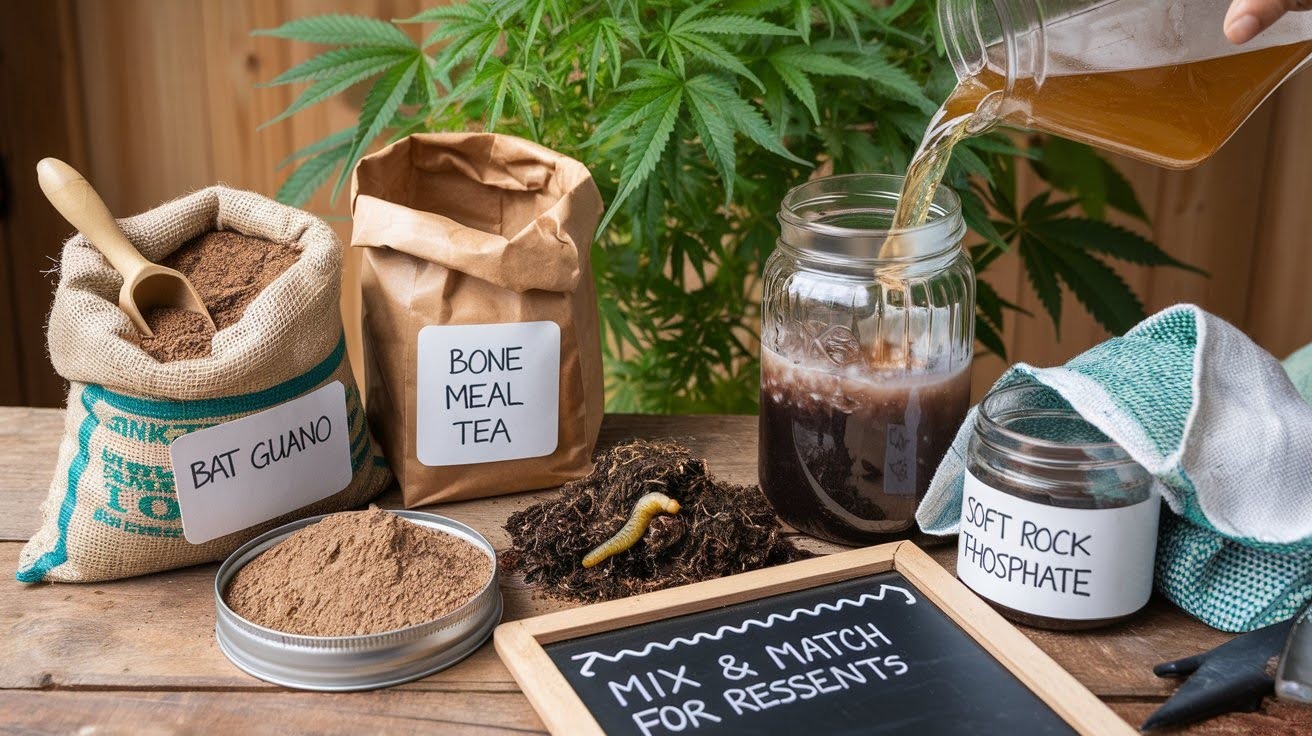
Compost tea releases nutrients slowly and feeds beneficial bacteria. Perfect for long-term soil health. Bat guano is my go-to for organic phosphorus. It’s readily available and works fast.
Bone meal takes longer but provides steady phosphorus release. I prefer making it into tea for quicker results. Blood meal works similarly to bone meal but with higher nitrogen content.
Worm castings and worm tea improve soil structure while adding phosphorus. Your plants love this stuff. Soft rock phosphate is excellent for outdoor soil beds. It slowly releases phosphorus over months.
Mix and match these methods. Foliar feed for immediate relief, then switch to organic soil amendments for sustained health. I’ve had excellent results combining quick synthetic fixes with long-term organic solutions.
Prevention Strategies for Healthy Growth
Preventing phosphorus deficiency beats treating it every time. Here’s how I keep my plants healthy from day one.
Soil Preparation and Quality
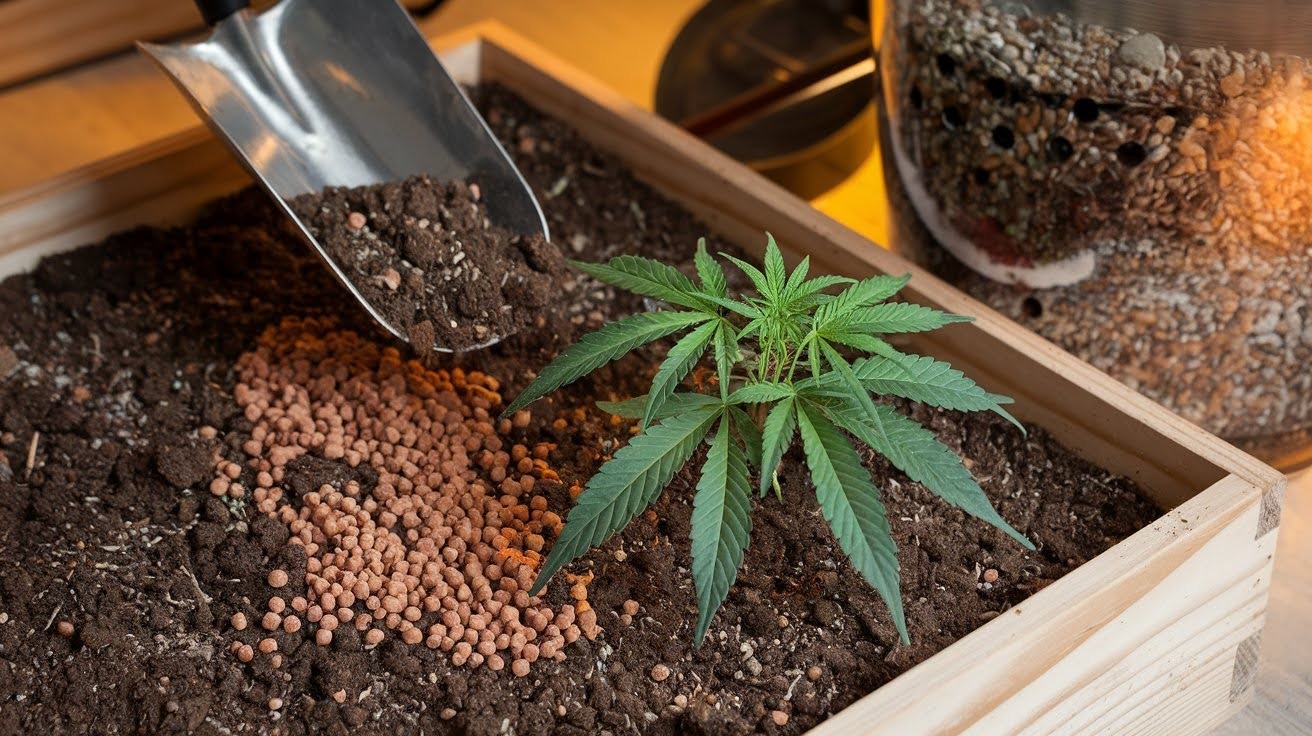
Start with quality soil. Look for a rich brown color and good texture that crumbles in your hands.
Add compost to boost nutrient density. This feeds your plant slowly over time.
Slow-release fertilizers prevent nutrient spikes that stress plants. They provide steady feeding for weeks. Drainage is everything. Waterlogged roots can’t absorb phosphorus, no matter how much you add.
Beneficial Microorganisms
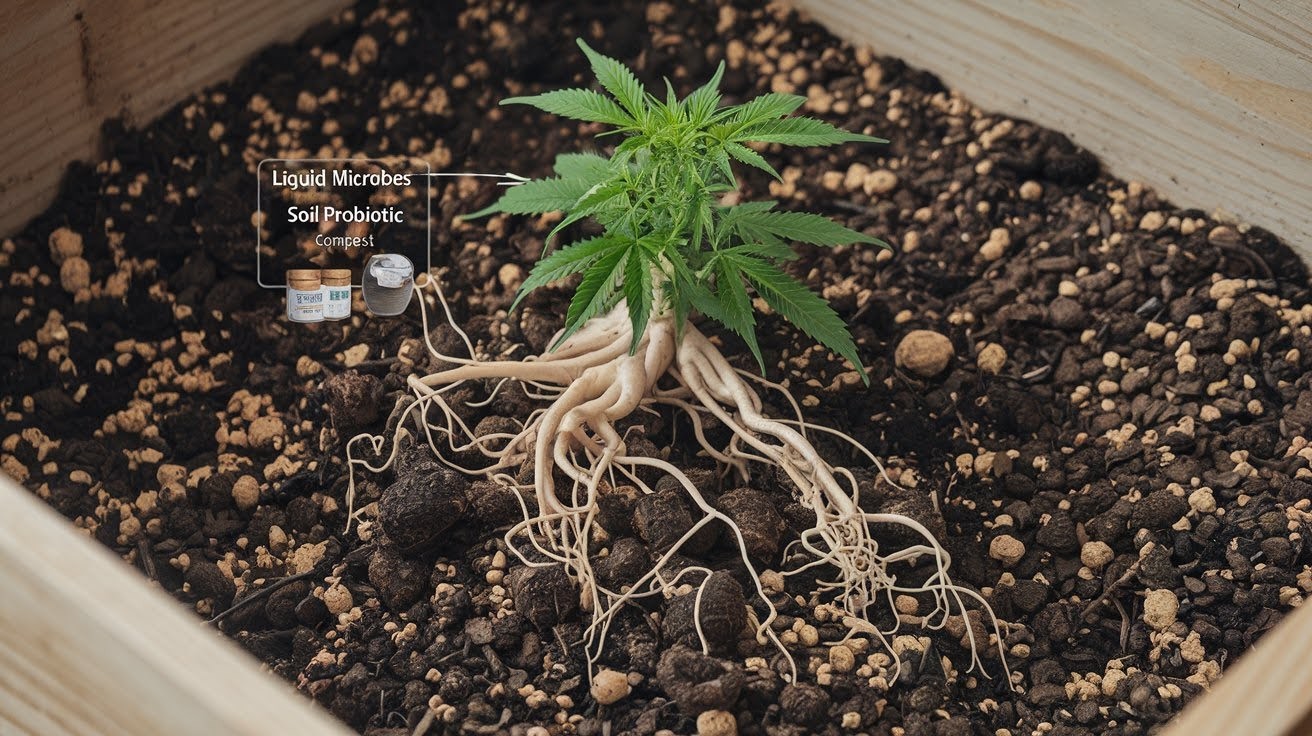
Mycorrhizal fungi are game-changers. These helpful organisms attach to roots and improve nutrient uptake dramatically. Here’s the science: Arbuscular mycorrhizae provide 80% of plant phosphate needs naturally.
Organic amendments keep soil biology healthy. Living soil means more nutritious plants.
Shelf-stable ferments add beneficial bacteria without the mess of homemade teas.
Consistent Growing Conditions
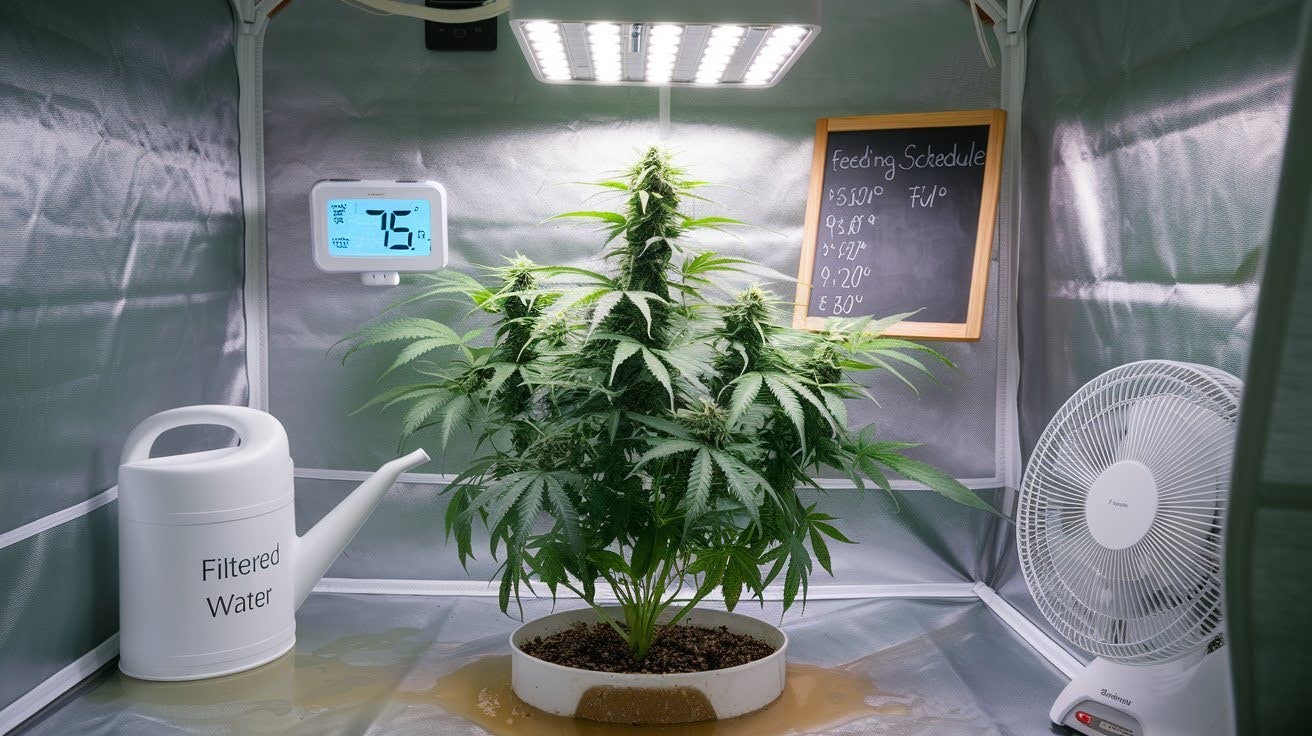
Monitor everything with basic sensors. Temperature and humidity swings stress plants. Water properly – not too much, not too little. Filtered water prevents mineral buildup. Follow feeding instructions exactly. More isn’t better with nutrients.
Conclusion
Phosphorus deficiency cannabis problems don’t have to ruin your growth. You now know how to spot the early warning signs, fix the underlying causes, and prevent future issues.
Remember the key points: check pH first, treat immediately with foliar sprays, and focus on creating healthy growing conditions. Most phosphorus problems come from pH imbalances, not actual nutrient shortages.
Your plants will recover with proper treatment. New growth will show a healthy green color within a week, and your harvest will get back on track. Questions about your specific situation? Drop a comment below – I read every one and love helping fellow growers succeed.
Share this guide with other growers who might be struggling with similar issues. Together, we can help more people grow healthy, productive cannabis.
Happy growing!
Frequently Asked Questions
What does phosphorus deficiency in cannabis look like?
Dark blue-green leaves with bronze or purple spots, shiny leaf surface, and downward curling. Symptoms start on older, lower leaves and progress upward if untreated.
How long does it take to fix phosphorus deficiency in cannabis?
Foliar sprays show results within 48 hours. Root treatments take about 1 week for visible improvement. New healthy growth appears within 1 week of proper treatment.
What causes phosphorus deficiency in cannabis plants?
pH imbalances are the leading cause. Other factors include cold temperatures below 60°F, overwatering, nutrient lockout from over-fertilization, and poor soil quality or drainage.
Can phosphorus deficiency in cannabis be prevented?
Yes, maintain proper pH levels (6.0-7.0 in soil), use quality soil with good drainage, monitor temperatures, and add beneficial microorganisms like mycorrhizal fungi for better uptake.
Will damaged leaves recover from phosphorus deficiency?
No, damaged leaves with bronze spots or yellowing won’t turn green again. Focus on new growth instead. Healthy new leaves should appear within one week of treatment.

